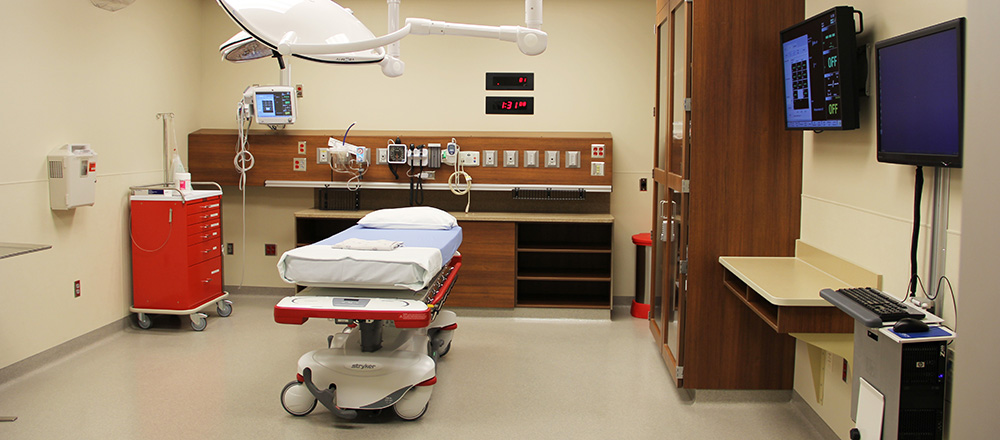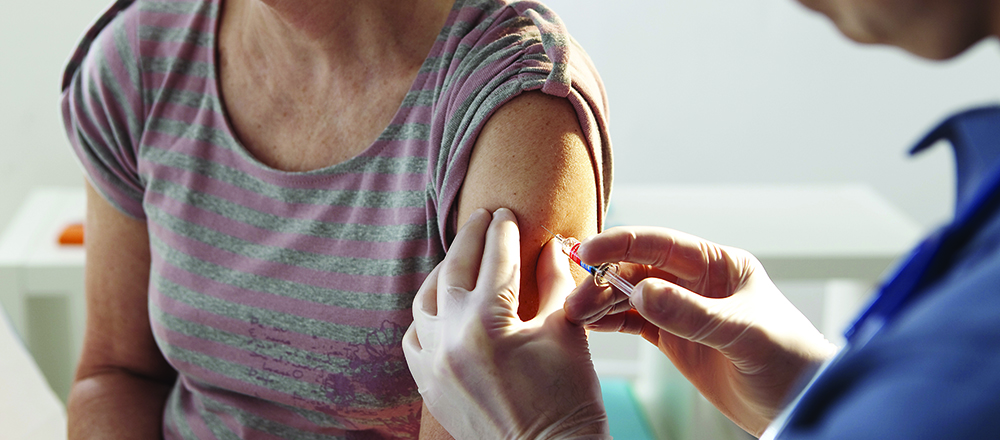Stay Safe and Avoid a Trip to the ER
November 16, 2023By: Lori Unruh
Categories: Prevention, Your Wellness

Stop the Bleed
Knowing how to stop serious bleeding can save a life. Learn about tourniquet use and wound triage in this free class.
According to the Centers for Disease Control and Prevention (CDC), unintentional injury is one of the leading causes of death and hospitalizations for people ages 1-44.
The leading causes of hospitalizations in the North Kansas City Hospital Trauma Center are falls, motor vehicle and motorcycle crashes, pedestrian accidents and firearm wounds. Learn how to reduce your risk of these common unintentional injuries and keep you and your family safe.
Older Adult Falls
Falls are the leading cause of injuries in adults age 65 and older as well as the most common cause of traumatic brain injuries. Every year, emergency departments treat more than 3 million older people for fall injuries.
To reduce you and your loved one’s risk of falling, follow these tips:
- Stay physically active. Regular exercise improves muscle strength and helps keep joints, tendons and ligaments flexible. Balance and strength training exercises, like yoga, Pilates and tai chi, improve balance and core strength.
- Fall-proof your home. Fall-proofing includes adding handrails on both sides of any stairs and ensuring good lighting without clutter throughout walkways, hallways and stairways. Removing all throw and small rugs helps with fall-proofing as well.
Motor Vehicle Crashes
In the U.S., motor vehicle crashes are one of the leading causes of death for those under the age of 30. No matter where you’re going, you must be cautious and aware when you get behind the wheel.
To reduce the risk of injury, follow these tips:
- Always click it. Wear your seatbelt and make sure all passengers properly wear their seatbelts before taking the car out of park.
- Eyes on the road. Hands on the wheel. Distracted driving is any activity that diverts attention from driving, including texting, eating, drinking, talking to people in your vehicle or adjusting your radio or navigation system.
- Avoid driving under the influence. Driving under the influence of alcohol, drugs or some prescription medications is dangerous for everyone on the road. If need be, contact a ride share service or a loved one, so you can arrive to your destination safely.
- Watch your surroundings. There’s a lot going on when you’re on the road. Make sure you check your blind spots before turning, merging lanes or getting on the highway for other vehicles, especially motorcycles.
Motorcycle Crashes
In 2021, more than 6,000 motorcyclists died in crashes, accounting for 14% of all traffic deaths in the U.S. It’s important for everyone to share the road and be alert of what is going on around them.
To reduce the risk of a motorcycle crash, motorcyclists should follow these tips:
- Wear an appropriate helmet. Visit the National Highway Traffic and Safety Administration website to learn how to choose the right helmet.
- Educate yourself. Make sure you are road ready by taking a motorcycle rider education course. This course is required to obtain a motorcycle license.
- Follow the rules of the road. Ride responsibly and obey traffic lights, signs and speed limits.
Pedestrian Safety
Despite traffic signs, crosswalks and so much more, pedestrian injuries and deaths increase every year. In 2021, more than 7,000 pedestrians were killed and over 60,000 were injured nationwide.
To reduce the risk of injuring a pedestrian, drivers should follow these tips:
- Watch for pedestrians everywhere, always.
- Be careful in low visibility. Use extra caution when driving in hard-to-see conditions, such as at nighttime or in bad weather.
- Look for the lines. Slow down and be prepared to stop when turning or otherwise entering a crosswalk.
- Give them space and time. Yield to pedestrians in crosswalks. Stop far enough away from the crosswalk so other drivers can see crossing pedestrians and stop, too.
Pedestrians should follow these tips to stay safe:
- Stick to the side. Walk on sidewalks whenever they are available. If there isn’t a sidewalk, walk facing traffic and as far from the road as possible.
- Cross safely. Only cross streets at crosswalks and intersections. Look for cars in all directions, including vehicles turning left or right.
Firearm Safety
Many gun deaths and traumatic injuries could be prevented with improvements in firearm handling and storage.
Avoid firearm injuries by following these tips:
- Out of sight. Out of mind. Keep guns out of reach and sight of children by storing them securely.
- Safekeeping. Store guns unloaded and secured with effective, child-resistant gun locks. It’s best to keep firearms in combination or fingerprint recognition safes.
- Separate is better. Store ammunition in a separate locked container in a different secure location out of reach and sight of children.
Follow these tips all year-round to stay safe and avoid a trip to the emergency room. Learn more lifesaving tips from the experts in our Trauma Center.



